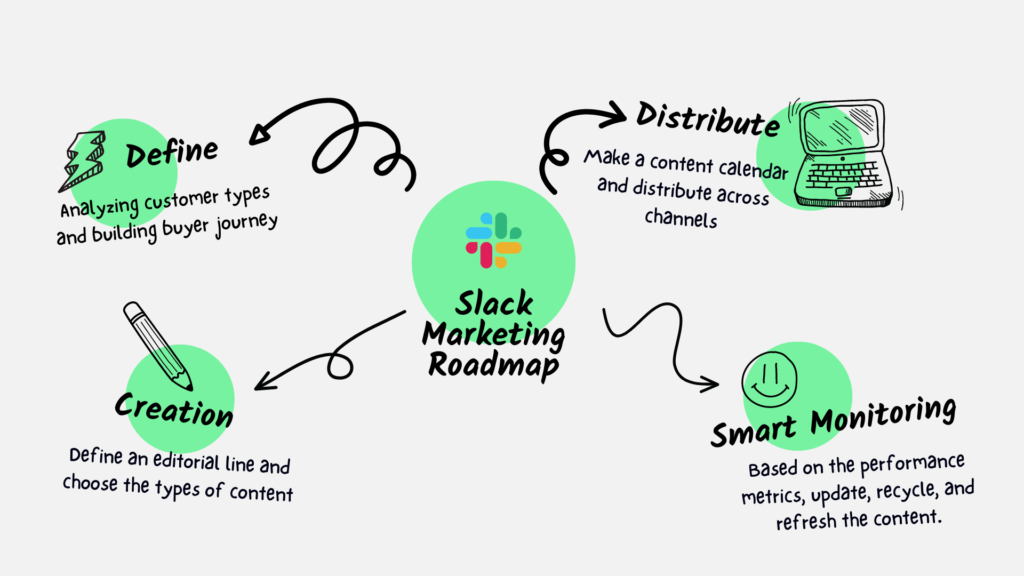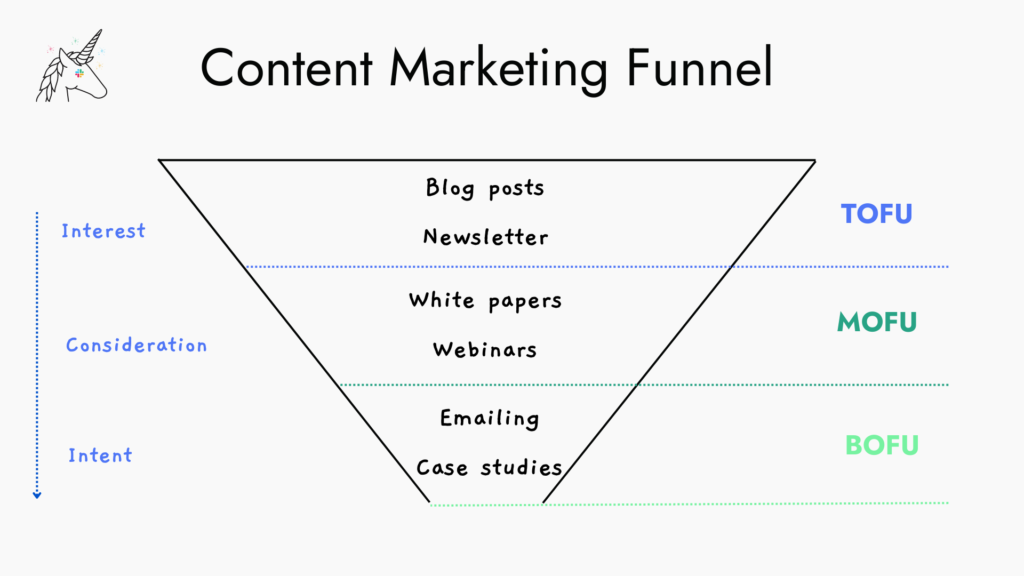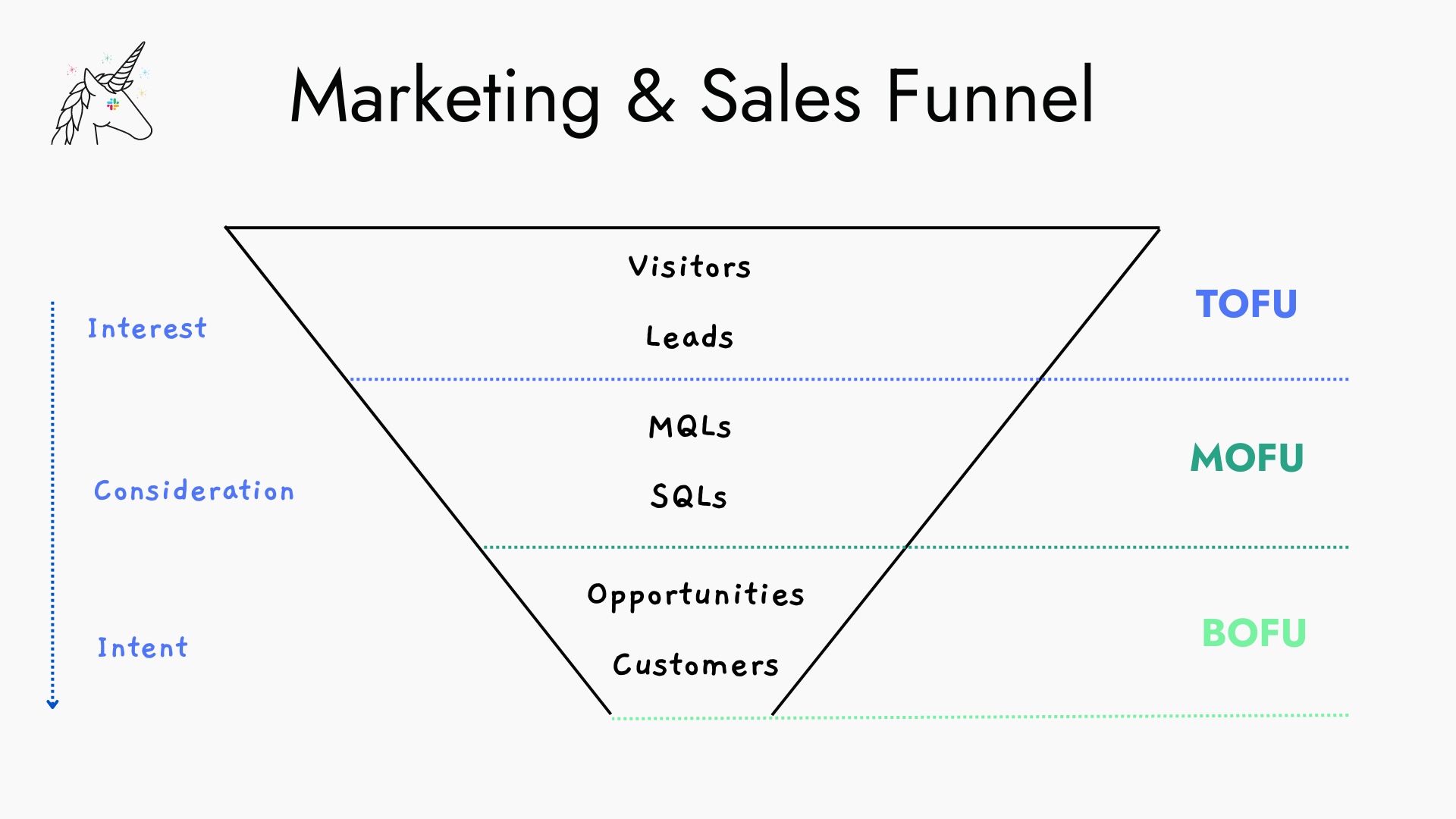Acquisition project | Salesforce
Product :
Slack: The Intelligent Productivity Platform,
B2B, slack.com

Elevator Pitch for Slack:
Teams are asked to do more with less in today's fast-paced business world. Disconnected systems are slowing things down, making it difficult to keep customers first. But there's a solution: Slack.
Slack is an intelligent productivity platform designed for customer-centric companies. It seamlessly integrates AI, data, and CRM into one powerful hub. Imagine automating and simplifying your processes with built-in tools, effortlessly organizing and sharing information, and transforming how your sales team works, resolves cases, and gains marketing insights.
You can easily connect with internal teams, partners, and customers or record updates with Slack. Gain insights and assistance from AI to stay ahead of the competition. Trust in Slack to bring AI, data, and CRM together, ensuring your customers are always a priority.
Don't let inefficiency hold you back. Transform your team's productivity and customer experience with Slack—where all your needs are met in one place.

demo link: https://www.youtube.com/watch?v=mmNsK4XG2-M&t
About Product
Stage: Mature scaling stage after getting acquired by Salesforce.
Marketing: Slack has been consistently implementing different strategies to grow its user base and customers, out of which integration with Salesforce platforms has been one of the major
- Freemium Model
- Virality and Word of Mouth
- Integration with Popular Tools
- Partnerships and Collaborations
- Customer Support and Success
- Enterprise Focus
- Sales and Marketing Initiatives
Product Review
Interviews
Meet Nikhil,
Nikhil oversees product development at his company (early stage startup, Climate Tech, saas), where Slack plays a vital role in daily operations, especially for communication and workflow management. He says that slack has seamless integrations with tools like Salesforce, Google Workspace have significantly streamlined their workflows, improving efficiency and collaboration across teams. Integrating Salesforce directly into Slack channels has made it easier for their sales and customer support teams to access and update relevant data, leading to quicker adoption and realization of Slack's benefits. But pricing has been an issue for their team to adopt slack as it is an high end product.
Meet Mohit,
Mohit has been an old customer of slack, who has been using slack even before it was gotten acquired by Salesforce ion 2021, He had interesting feedback like, slack has eventually got rich in features , also with slack ai summary and slack ai search, which has made life quite easier from endless number of channels which seemed quite lost many time, but one feedback he had was the flexibility of slack as slack bots, apps, has deduced eventually in order to make it a full-fledged product
Meet Nikha ,
Nikha works at salesforce as a software engineer and she had great experience with slack, but support cases generation can be improved according to her, in order to mange cases more efficiently;y, right a new incident channel is been created on every case, which make an engineer overwhelmed with a lot of channels to manage at the end and it gets very cluttered at the end.
Understanding Users:
ICPs
| ICP 1 | ICP 2 | ICP 3 |
| |||
Company size | 12 employees | 3,000+ employees | 100-200 employees |
GMV/ Funding Raised | $500K (seed round) | $1.5 billion+ | $10 million |
Industry domain | Climate Tech | Food Delivery and Restaurant Aggregator | Healthcare Technology |
#sales #dev #marketers | Sales: 2 salespersons Operations: 1 operations manager Design: 3 designers Development: 4 software engineers | Operations: 500 operations managers Marketing: 300 marketers Customer Support: 1,000 customer support agents Development: 500 software engineers | Sales and Business Development: 20 salespersons Operations: 30 operations managers Marketing: 15 marketers Customer Support: 25 customer support agents Development: 40 software engineers |
stage | early startup stage | Mature, rapidly growing | Mid-stage startup, rapidly growing |
org structure | flattened, direct communication | Hierarchical Structure, Cross-functional Teams: | Flat to Semi-Hierarchical, Collaborative Teams |
Product visisbiloity across social media platforms
Email marketing:
Finally, what makes Slack’s email marketing efforts stand out is the cadence of their emails. They don’t clutter your inbox. They simply share onboarding emails and tips on how to make the most of their product


Slack’s Instagram
What makes Slack’s marketing strategy on Instagram a success?
- They stick to their brand colors to create a cohesive feed. This also helps them improve brand recognition.
- They use a variety of formats on their feed—static images, carousels, and reels.
- Their content is educational yet fun.

Slack’s LinkedIn
Being active on LinkedIn for a B2B brand is a no-brainer, but Slack’s social media strategy on LinkedIn has helped them garner a whopping 1.2 million followers.

Slack’s Twitter

What makes Slack’s marketing strategy on Twitter a success?
Use of Twitter’s varied features—text tweets, videos, polls, and pinning important tweets.
Important product and event updates to keep their users in the loop.

Slack’s YouTube
What brings in 50k+ subscribers and 50+ million views? Informative and engaging content. And Slack does just that!

Market
- Total Addressable Market (TAM)
- Slack estimates the TAM for workplace business technology software platforms for communication and collaboration to be $28 billion.
- Gartner and IDC estimate the broader collaboration services market and Slack’s direct market.
- Calculation Method:
- Slack's TAM is derived by considering the total number of potential customers (companies of various sizes) and the potential ARR from these customers.
- Serviceable Available Market (SAM)
- Gartner estimates Slack's direct market for collaboration services will increase to $7.6 billion by 2024 from $4.3 billion in 2019.
- IDC estimates Slack's direct market for team collaboration applications will increase to $5.8 billion by 2022 from $3.5 billion in 2019.
- Calculation Method:
- Using Gartner's and IDC’s estimates, we can determine the SAM by taking the average of the estimates and projecting growth.
- Serviceable Obtainable Market (SOM)
- Calculation Method:
- Considering an optimistic but realistic market capture rate (e.g., 20-30% of SAM)
- Estimate:
- Assuming Slack captures 25% of the SAM: 0.25×6.2=$1.550.25 \times 6.2 = \$1.550.25×6.2=$1.55 billion
Market Potential Analysis Current Market Size and Growth Rates
- TAM: $28 billion
- SAM: $7.0 billion (estimated for 2023-2024)
- SOM: $1.55 billion (estimated)
Slack distribution across industries
Competitors
Slack has good competitors in the Enterprise industry, including major players like Microsoft Team, cisco, etc. Let's dive into what their USPs are and their plus points. by 2022
Slack: | Microsoft Teams: | Google Chat: | Webex: | |
Growth | 20M + DAU | 300M + DAU | 100M+ DAU | 60M+ DAU |
Features / USP | Slack Connect for secure external collaboration. | Advanced meeting tools, Together Mode, deep Microsoft 365 integration | Integration with Google Workspace, robust search, and security measures. | Comprehensive meeting tools, virtual whiteboarding, People Insights. |
Experience | Over 2,400 available integrations, including Salesforce and Google Workspace | End-to-end encryption for meetings and enhanced compliance features. | Streamlined for Google ecosystem users. | Leading security measures, recognized by the NSA |
And out of these, the biggest war is with Microsoft Teams. The growth of Microsft in comparison to Slack has been massive after 2020, and that is because of letting go of the Skype business and creating an ecosystem to have Teams integration across all the Microsoft 365 products.
Acquisition strategy
Let's have an influencer and blocker for the product Analysis.
Based on the Ideal Customer Profiles (ICPs) we have created for a climate tech startup, a food delivery and restaurant aggregator, and a mid-size healthcare startup, here are the potential influencers and blockers in buying Slack as a collaborative tool:
Climate Tech Startup (ICP1)
Potential Influencers:
- CEO
- CTO
- Sales Team
- Operations Manager
Potential Blockers:
- CFO:
- Concerned about the cost and ROI of adopting Slack.
- IT Department:
- Concerned about data security, privacy, and compliance, especially with sensitive healthcare data.
- Healthcare Professionals:
- Might be resistant to change and prefer traditional methods of communication.
Food Delivery and Restaurant Aggregator (ICP2)
Potential Influencers:
- Chief Operating Officer (COO)
- Chief Marketing Officer (CMO)
- Customer Support Manager
- Development Team Lead
Potential Blockers:
- Chief Financial Officer (CFO):
- Concerned about the cost of deploying Slack across a large organization.
- IT Security Team:
- Worries about data security and compliance, especially with handling user data.
- Middle Management:
- Might be hesitant to change established workflows and adopt new tools
Mid-size Healthcare Startup (e.g., EkaCare)
Potential Influencers:
- CEO
- CTO
- Operations Manager
- Customer Support Manager
Potential Blockers:
- CFO
- Healthcare Compliance Officer
- Healthcare Professionals
By understanding these influencers and blockers, Slack can tailor its approach to address the specific concerns and highlight the most relevant benefits for each type of organization.
Let's see what has worked and is working the best for Slack.
Current Strengths :

High Search Engine Visibility: Slack's strong SEO strategies help drive organic traffic .
Customer Stories: Case studies showcasing success stories and testimonials
Email Marketing: Informative, engaging, and well-timed emails .
Resource Library: Comprehensive guides, blogs, reports, and e-books.

Also, you'll notice Slack's marketing strategy for their website content is mostly based on creating helpful guides. This helps their customers use their product fairly easily.
Slack's social media game:
Slack uses multiple social media platforms, including Instagram, Twitter, Facebook, YouTube, and LinkedIn.
- Slack's Instagram strategy focuses on brevity and clarity and uses Instagram Reels to promote recent updates. With this platform, the brand can engage users with eye-catching visuals, humor, and various content types.
- On the other hand, Twitter is used to build excitement for upcoming events and interact with the audience. Even when the product or service isn't promoted directly,
- Facebook highlights a brand's mission statement and engages users.
- Video content is posted weekly on YouTube.
- Lastly, LinkedIn connects professionals, shares company blogs, and promotes inclusivity and diversity.
How can we strategies to increase the acquisition by using content marketing?

Slack Content Marketing Strategy Roadmap
- Analyze Customer Types
- Buyer Personas: Identify key personas, including IT managers, team leaders, and remote workers.
- Ideal Customer Profile (ICP):
- Focus on mid-sized tech companies, remote-first organizations, and collaborative teams.
- Scaling to the enterprise business, too, but has a tough fight with Microsoft Teams because of the established ecosystem.
- Construct the Buyer's Journey
- Awareness Stage (TOFU): Attract visitors with educational content.
- Consideration Stage (MOFU): Nurture prospects with detailed guides and comparisons.
- Decision Stage (BOFU): Convert leads with customer stories and free trials (freemium model).
- Define the Editorial Line
- Corporate Culture: Emphasize Slack's mission to improve workplace communication.
- Audience Interests: Address pain points such as siloed communication, productivity, and remote work challenges.
- Create a Content Calendar
- Frequency: Publish blog posts twice weekly, monthly webinars, and quarterly white papers.
- Themes: Rotate between productivity tips, Slack use cases, integration highlights, and industry trends.
- Choose Content Types
- Blog Posts: Answer FAQs, provide how-tos, and share industry insights.
- White Papers: Offer in-depth analyses of communication trends and productivity.
- Webinars: Host sessions with industry leaders discussing collaboration and tech innovations.
- Case Studies: Showcase successful implementations of Slack in various industries.
- Distribute Content
- SEO & SEM: Optimize for search engines and invest in targeted ads.
- Social Media: Use LinkedIn for professional content, Twitter for updates, and YouTube for tutorials.
- Email Campaigns: Segment lists and send personalized emails to nurture leads.
- Monitor Performance
- KPIs: Track metrics like content engagement, lead generation, conversion rates, and CAC.
- Tools: Use Google Analytics, HubSpot, and social media analytics for data insights.
- Refresh Content
- Repurpose: Convert webinars into blog posts, infographics, and social media snippets.
- Update: Regularly update top-performing content with the latest information.
- Collaboration and Partnerships
- Webinar Co-hosting: Partner with industry influencers and complementary tech products.
- Guest Blogging: Exchange guest posts with industry blogs to reach new audiences.
- Joint Case Studies: Collaborate on case studies with partners to show integrated solutions.
- Community Building
- Slack Communities: Foster user communities for peer support and feedback.
- Engagement Programs: Run challenges, AMAs (Ask Me Anything), and feature requests to involve users.
Q1 | Q2 | Q3 | Q4 |
Define buyer personas, Construct buyer's journey, Set up a the content calendar. | Launch initial content pieces, Host the first webinar, Start social media campaigns. | Evaluate performance, Refresh top content, Expand distribution efforts. | Scale up partnerships, Host community events, Optimize lead nurturing. |


Increase acquisition and reduce CAC using channel Product Integration
Acquisition Strategy Framework
- Identify Key Integrations
- CRM Tools: Salesforce (acquired by Salesforce in 2021), HubSpot, Zoho CRM
- Project Management: Trello, Asana, Jira
- Communication: Zoom, Microsoft Teams, Google Meet
- Productivity: Google Workspace, Microsoft Office 365
- Developer Tools: GitHub, GitLab, Jenkins
- Develop a Comprehensive Integration Ecosystem
- API Enhancements: Ensure robust and easy-to-use APIs for third-party integrations.
- Partner Programs: Create strategic partnerships with leading software providers.
- Developer Support: Provide developers with extensive documentation, SDKs, and dedicated support.
- Marketing and Promotion
- Integration Campaigns: Highlight key integrations in marketing campaigns.
- Use Cases: Showcase real-world examples of how integrations solve specific pain points.
- Webinars and Demos: Conduct live demonstrations and webinars using Slack with integrated tools.
- Customer Onboarding and Support
- Onboarding Guides: Create step-by-step guides and tutorials for setting up integrations.
- Support Channels: Provide dedicated support channels for integration-related issues.
- Customer Success Stories: Share success stories and testimonials from customers who benefited from integrations.
- Continuous Improvement
- Feedback Loops: Implement mechanisms to gather feedback on integrations and iterate based on user input.
- Beta Programs: Launch beta programs for new integrations to gather early user feedback and make improvements.
- Performance Monitoring: Use analytics to monitor the performance and usage of integrations, identifying areas for enhancement.
Roadmap
Q1 | Q2 | Q3 | Q4 |
Identify Key Integrations, API Enhancements, customizable for plugins, Partnerships | Develop Integrations, Marketing Campaigns, Onboarding Resources | Customer Onboarding, Feedback and Iteration, Performance Monitoring | Expand Integration Ecosystem, Community Building, Long-term Strategy |
Reduced CAC: By enhancing the value proposition through integrations, Slack can attract and retain customers more cost-effectively, leveraging network effects and partner co-marketing.
Increased Customer Retention: Embedded integrations make Slack indispensable to daily operations, increasing stickiness and reducing churn.
Enhanced Product Adoption: Seamless and valuable integrations facilitate easier adoption and quicker realization of Slack’s benefits.

Brand focused courses
Great brands aren't built on clicks. They're built on trust. Craft narratives that resonate, campaigns that stand out, and brands that last.
All courses
Master every lever of growth — from acquisition to retention, data to events. Pick a course, go deep, and apply it to your business right away.
Explore courses by GrowthX
Built by Leaders From Amazon, CRED, Zepto, Hindustan Unilever, Flipkart, paytm & more
Course
Advanced Growth Strategy
Core principles to distribution, user onboarding, retention & monetisation.
58 modules
21 hours
Course
Go to Market
Learn to implement lean, balanced & all out GTM strategies while getting stakeholder buy-in.
17 modules
1 hour
Course
Brand Led Growth
Design your brand wedge & implement it across every customer touchpoint.
15 modules
2 hours
Course
Event Led Growth
Design an end to end strategy to create events that drive revenue growth.
48 modules
1 hour
Course
Growth Model Design
Learn how to break down your North Star metric into actionable input levers and prioritise them.
9 modules
1 hour
Course
Building Growth Teams
Learn how to design your team blueprint, attract, hire & retain great talent
24 modules
1 hour
Course
Data Led Growth
Learn the science of RCA & experimentation design to drive real revenue impact.
12 modules
2 hours
Course
Email marketing
Learn how to set up email as a channel and build the 0 → 1 strategy for email marketing
12 modules
1 hour
Course
Partnership Led Growth
Design product integrations & channel partnerships to drive revenue impact.
27 modules
1 hour
Course
Tech for Growth
Learn to ship better products with engineering & take informed trade-offs.
14 modules
2 hours
Crack a new job or a promotion with ELEVATE
Designed for mid-senior & leadership roles across growth, product, marketing, strategy & business
Learning Resources
Browse 500+ case studies, articles & resources the learning resources that you won't find on the internet.
Patience—you’re about to be impressed.























